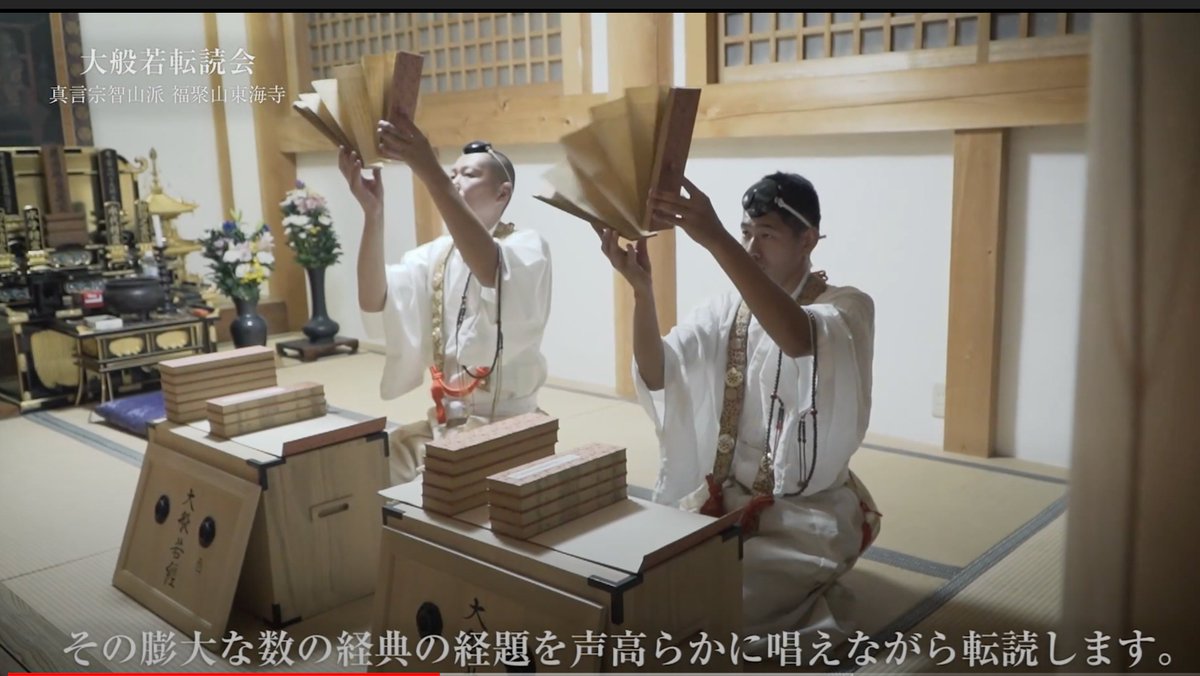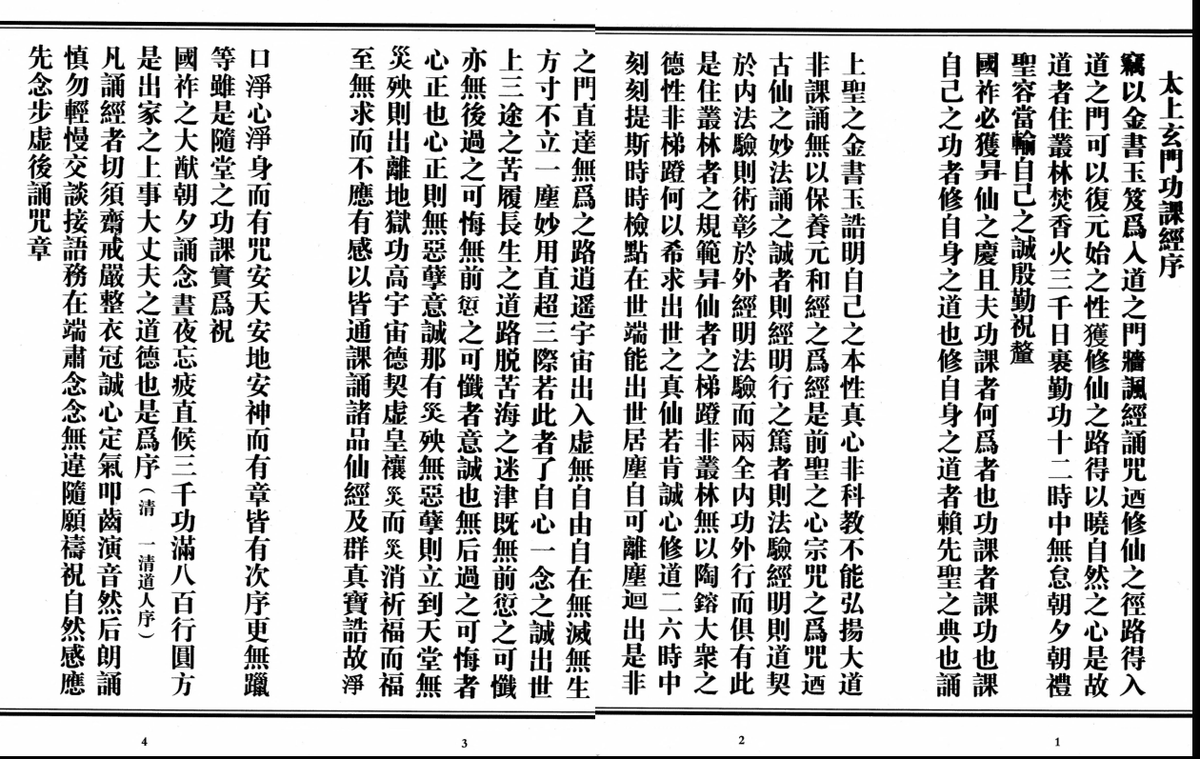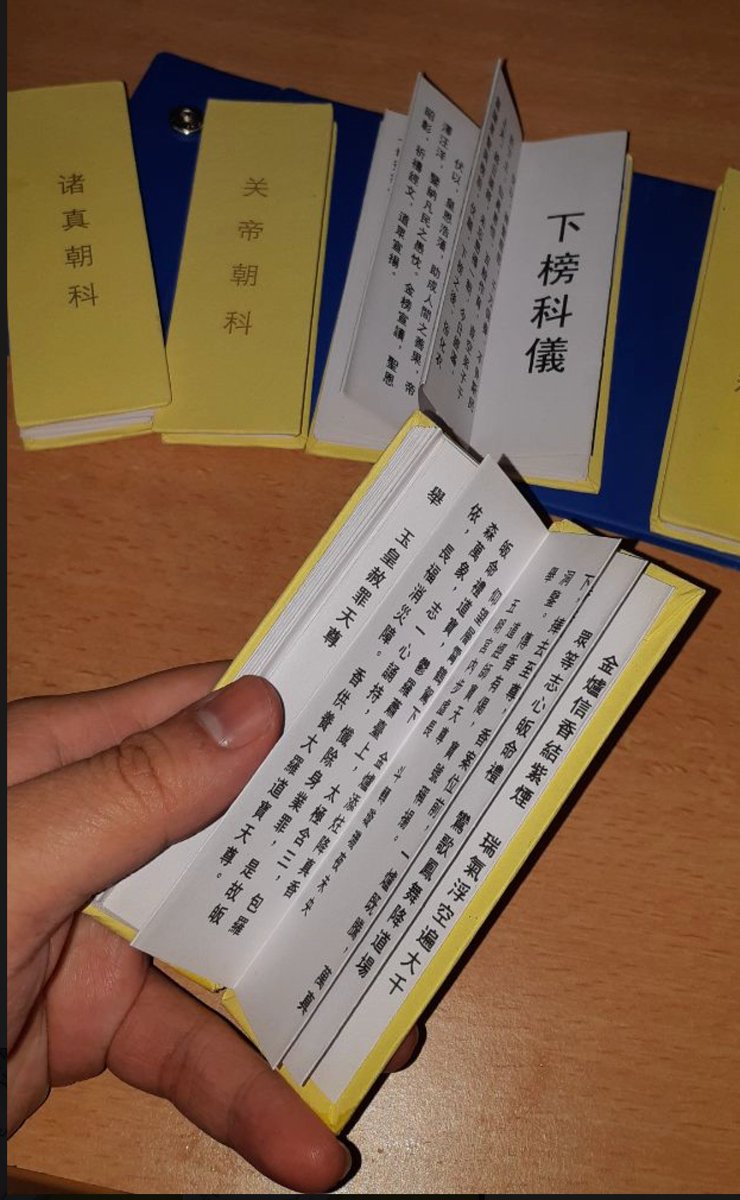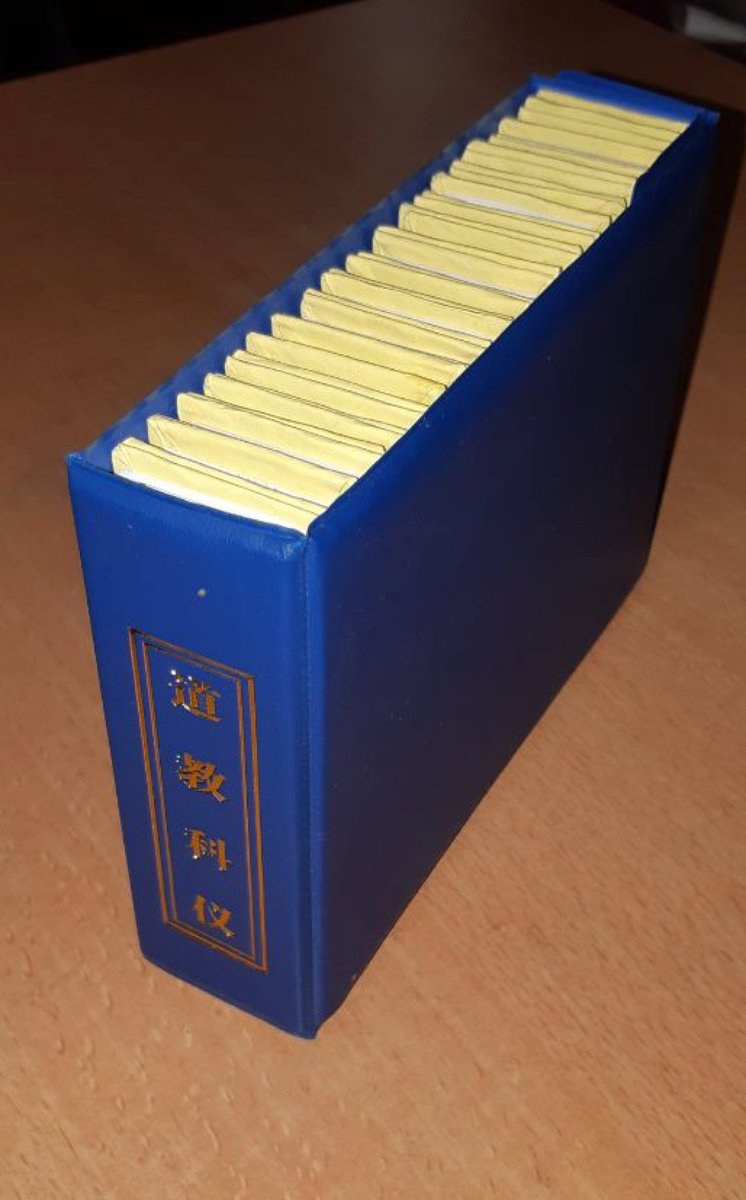My gut feeling is that this "concertina binding" was- and is- primarily motivated for the sake of religious recitation. This binding has two unique features
1- it can lie absolutely flat in the surface
2- it can be easily and rapidly turned. https://twitter.com/DevinFitzger/status/1353745573627617280
1- it can lie absolutely flat in the surface
2- it can be easily and rapidly turned. https://twitter.com/DevinFitzger/status/1353745573627617280
both features are highly valuable when you are say, chanting a sutra or a liturgy, where you do not have time to fiddle about with codices. I have personally seen daoist priests carry manuscript concertina books, no more than 2 fingers wide, as an aide-memoire when doing rituals.
such tiny books can be turned with one finger alone, and discreetly consulted. https://twitter.com/edwardW2/status/1256266697738051584
Further evidence can be found in what texts do these books carry in the Chinese context. In the examples I have come across (i.e. printed ones) *every single one* is a religious text. No secular literature (eg novels, encyclopedias) is printed like that in modern times...
As @DevinFitzger mentions with the palm leaf mss, conservatism alone cannot explain why concertina books are still produced today, with printing rather than manuscript. Rather, I think it is the unique properties of such books, properties that are valuable to reciting
... the text, that ensure the continued survival of such a format.
Again, consider this Daoist practise of inserting a slat of wood between the pages to turn them: https://twitter.com/edwardW2/status/1320603391270113280 this prevents the books from being dirtied, and is also impossible with a codex...(OTOH buddhist concertinas are turned by hand....)
An even more extreme example of a religious textual practise is what the Japanese call Tendoku: 転読 an esoteric practise which involves cascading the pp. of such bk between the hands as a means of "reading" its contents, thereby acquiring the merit.
but of course, these books cannot escape the rising tide of the codex: The img below https://archive.org/details/taishangxuanlingzaotangongkejing/page/n2/mode/2up is a scan of the book featured here. https://twitter.com/edwardW2/status/1256265464482656257/ If you notice carefully, each "panel", of the concertina is separately numbered, like a pps in a codex...
Returning to the small liturgical manuals, I possess a set of about 20 such tiny books, which are *printed*, rather than in manuscript. Each contains a ritual or hymn, and all come in a rather attractive carrying case.
Another interesting thing about these books, is that they are printed on both sides: as you can see below, one side bears the "Morning ritual for sacrificing to the stove" 祀灶朝科,the other the "Morning ritual of the Moon 太陰朝科
This is something that is probably only possible with western-style printing techniques (eg letterpress of offset) and not the traditional woodblock printing, which would mar the other side. Rather than being destroyed by new tech, the concertina format thrives on it...

 Read on Twitter
Read on Twitter





